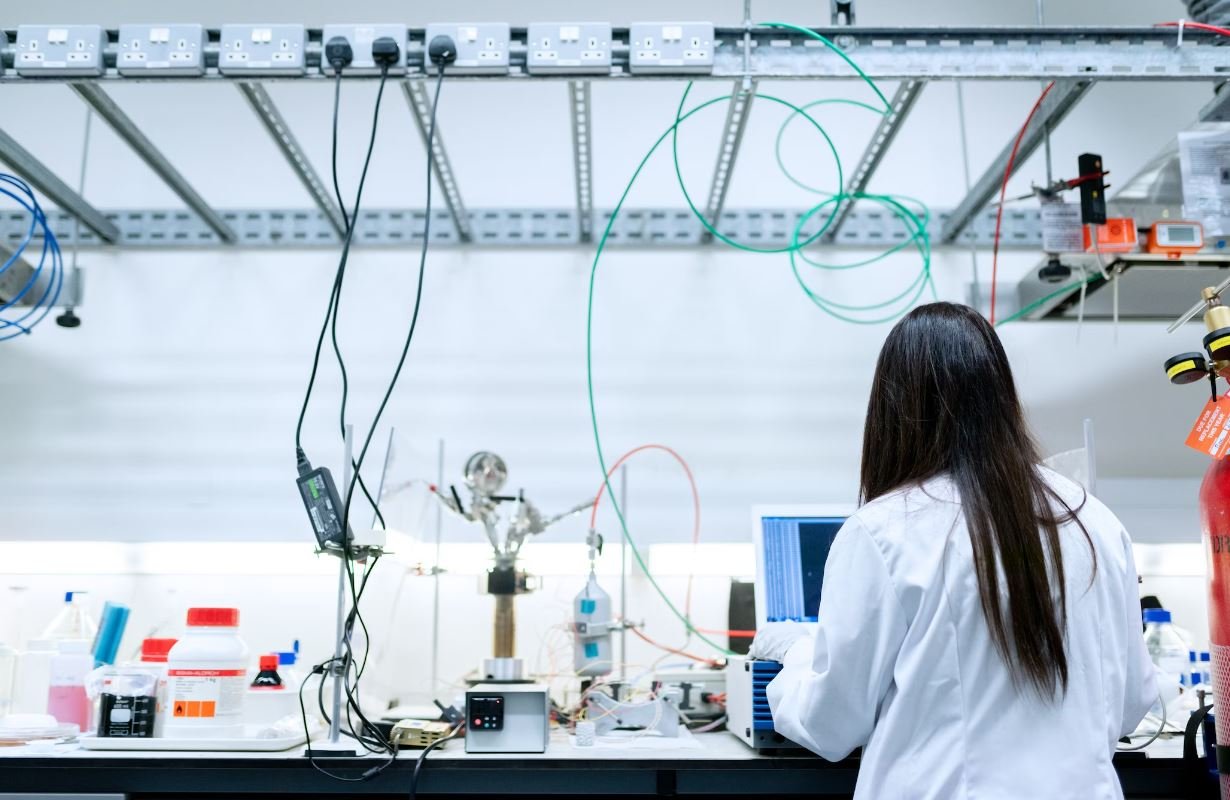Deep Learning vs Machine Learning vs AI
The fields of deep learning, machine learning, and artificial intelligence (AI) are often used interchangeably, leading to confusion among many people. While they are related and interconnected, they are distinct from each other. Understanding the differences between these terms will help provide clarity in the world of technology and its applications.
Key Takeaways:
- Deep learning, machine learning, and AI are distinct but interconnected fields.
- Deep learning is a subset of machine learning that focuses on neural networks with multiple layers.
- Machine learning involves algorithms that enable computer systems to learn and make predictions based on data.
- AI is a broader concept that refers to the simulation of human intelligence in machines.
Defining Deep Learning, Machine Learning, and AI
Deep learning is a subset of machine learning that focuses on neural networks with multiple layers. These networks are designed to mimic the functioning of the human brain, simulating the way neurons interconnect. Deep learning algorithms provide computers with the ability to learn from vast amounts of unstructured and labeled data, enabling them to recognize patterns, make decisions, and perform tasks without explicit instructions. *Deep learning has revolutionized various industries, including healthcare and autonomous vehicles.*
Machine learning, on the other hand, encompasses a broader range of algorithms and techniques that enable computer systems to learn and make predictions based on data. Unlike traditional programming, where rules and instructions are explicitly defined, machine learning algorithms automatically learn from examples or experiences. By analyzing large amounts of data, these algorithms can identify patterns, uncover insights, and make predictions or decisions. *Machine learning is used extensively in areas such as fraud detection and recommendation systems.*
Artificial intelligence (AI) refers to the simulation of human intelligence in machines that are programmed to think and perform tasks like humans. While deep learning and machine learning are subsets of AI, AI is a broader concept that includes other techniques, such as natural language processing and computer vision. AI systems can exhibit capabilities like perception, reasoning, learning, problem-solving, and decision-making. *AI is advancing rapidly, enabling breakthroughs in fields like robotics and healthcare.*
Different Approaches and Techniques
Deep learning, machine learning, and AI utilize different approaches and techniques to achieve their respective goals. Deep learning primarily relies on artificial neural networks, specifically deep neural networks with multiple layers. These networks process information through interconnected layers of nodes, or neurons, allowing the system to learn and extract features from the data. This hierarchical representation enables deep learning algorithms to automatically learn complex patterns and perform tasks with high accuracy.
Machine learning approaches can be categorized into supervised learning, unsupervised learning, and reinforcement learning. Supervised learning involves training an algorithm on labeled data, where the correct answers are already known. Unsupervised learning, on the other hand, deals with unlabeled data, where the algorithm discovers meaningful patterns or structures by itself. Reinforcement learning involves training a system to interact with its environment and learn from the consequences of its actions.
Differences in Purpose and Scope
When it comes to the purpose and scope, the fields have distinct differences. Deep learning focuses on solving highly complex tasks that require a large amount of labeled training data, such as image recognition and natural language processing. Machine learning is more versatile and can be applied to a wide range of applications, including regression analysis, clustering, and recommendation systems. Finally, AI aims to create systems that can perform tasks requiring human-like intelligence, going beyond specific tasks or domains.
| Deep Learning | Machine Learning | AI | |
|---|---|---|---|
| Approach | Deep Neural Networks | Various algorithms | Various techniques (including machine learning) |
| Purpose | Solving complex tasks | Wide range of applications | Performing human-like tasks |
| Example | Image recognition | Fraud detection | Autonomous robots |
Looking Ahead: The Potential of Deep Learning, Machine Learning, and AI
The applications for deep learning, machine learning, and AI are vast and expanding rapidly. These technologies have the potential to revolutionize industries, enhance decision-making processes, and improve the quality of life. From personalized medicine to self-driving cars, the advancements in these fields continue to push the boundaries of what is possible.
| Deep Learning | Machine Learning | AI | |
|---|---|---|---|
| Healthcare | Medical image analysis | Diagnosis and treatment prediction | Personalized medicine |
| Transportation | Autonomous vehicles | Traffic prediction | Smart transportation systems |
| Finance | Fraud detection | Stock market prediction | Risk assessment |
As technology continues to advance, the fields of deep learning, machine learning, and AI will undoubtedly play pivotal roles in shaping the future. From enabling breakthrough scientific discoveries to improving everyday life, these fields provide exciting opportunities and challenges. Embracing their potential will allow us to tackle complex problems and unlock new possibilities in the digital era.

Common Misconceptions
Deep Learning
One common misconception about deep learning is that it is the same as machine learning, when in fact it is a subset of machine learning. Deep learning involves training artificial neural networks with multiple layers to analyze and learn from massive amounts of data.
- Deep learning is not the same as neural networks.
- Deep learning is about training neural networks with multiple layers.
- Deep learning requires large amounts of data for effective training.
Machine Learning
Another misconception is that machine learning and deep learning are synonymous with artificial intelligence (AI). While both machine learning and deep learning are essential components of AI, AI also encompasses other techniques that are not solely based on learning from data.
- Not all AI algorithms are based on machine learning.
- Machine learning is a key element of AI, but not the only one.
- Machine learning deals with algorithms that improve performance over time.
Artificial Intelligence
A common misconception about artificial intelligence is that it refers to machines becoming self-aware or humanoid robots. In reality, AI is a broad field that focuses on creating intelligent machines that can perform tasks that would typically require human intelligence.
- AI is not about creating self-aware machines or robots.
- AI aims to develop machines that can mimic human intelligence.
- AI can be seen as the broader concept, with machine and deep learning being specific technologies within AI.

The Rise of Artificial Intelligence
Artificial intelligence (AI) has become a buzzword in recent years, with its potential to transform various industries. Deep learning and machine learning are two subsets of AI that have gained significant attention. This article explores the differences between deep learning, machine learning, and AI.
Table: Deep Learning vs Machine Learning vs AI
Comparison of deep learning, machine learning, and AI based on their characteristics and applications.
| Characteristics | Deep Learning | Machine Learning | AI |
|---|---|---|---|
| Complexity of problem-solving | High | Moderate | Variable |
| Data requirements | Large labeled datasets | Labeled or unlabeled datasets | Varies based on application |
| Algorithm type | Artificial neural networks | Classification and regression algorithms | Varies based on application |
| Applications | Speech recognition, image processing | Recommendation systems, fraud detection | Robotics, autonomous vehicles |
| Hardware requirements | High-end GPUs | Standard CPUs | Varies based on complexity |
| Training time | Long | Short to moderate | Varies based on complexity |
| Interpretability | Difficult to interpret | Interpretability varies | Varies based on application |
| Scope | Narrow | Broader than deep learning | Variable |
| Real-world integration | Increasingly implemented | Implemented in various domains | Advancing rapidly |
Unleashing Deep Learning Potential
Deep learning, a subset of AI, utilizes artificial neural networks to simulate the human brain’s structure and function. It specializes in solving highly complex problems, such as speech recognition and image processing. Deep learning algorithms require large labeled datasets and high-end GPUs for training. Although challenging to interpret, deep learning’s real-world integration is increasingly evident across different domains.
The Power of Machine Learning
Machine learning, another subset of AI, focuses on developing algorithms that can learn from data and make predictions or decisions. It encompasses various classification and regression algorithms that may use either labeled or unlabeled datasets. Machine learning finds applications in recommendation systems, fraud detection, and more. Unlike deep learning, machine learning algorithms can be interpreted to some extent, and the scope of its applications is broader.
Artificial Intelligence: The Encompassing Concept
Artificial intelligence (AI) encompasses both deep learning and machine learning, along with other algorithms and techniques. The complexity of problem-solving, data requirements, and algorithm types can vary extensively in AI applications. From robotics to autonomous vehicles, AI is revolutionizing multiple industries. The hardware requirements, training time, and interpretability of AI systems depend on the specific application’s complexity.
Emerging Trends and Future Perspectives
The integration of deep learning, machine learning, and AI is driving remarkable advancements and flourishing technological breakthroughs. As technology continues to evolve, industry-specific AI solutions will become more accessible and feasible. With the ability to process substantial amounts of data and continually learn from it, AI is poised to shape the future in unprecedented ways.
Conclusion
The comparison of deep learning, machine learning, and AI reveals the distinctive characteristics and applications of each subset. While deep learning demonstrates unparalleled problem-solving capabilities and complexity, machine learning offers broader applications and interpretability. AI, as the encompassing concept, extends beyond deep learning and machine learning and encompasses various algorithms and techniques. The future holds great potential for the integration of these subsets, with AI forging the way into a technologically advanced and AI-driven world.
Frequently Asked Questions
What is Deep Learning?
Deep learning is a subset of machine learning that focuses on artificial neural networks inspired by the human brain. It involves training these neural networks to learn and make decisions without being explicitly programmed.
What is Machine Learning?
Machine learning is a field of artificial intelligence that enables computers to learn and improve from experience without being explicitly programmed. It involves algorithms that can automatically learn patterns and make decisions based on the given data.
What is AI (Artificial Intelligence)?
Artificial Intelligence, or AI, refers to the development of computer systems that can perform tasks that would normally require human intelligence. It involves simulating human intelligence in machines, enabling them to learn, understand, and make decisions.
How are Deep Learning and Machine Learning related?
Deep learning is a subset of machine learning. While both involve training models on data to make predictions or decisions, deep learning specifically focuses on utilizing artificial neural networks with multiple layers to extract complex features from the data.
What are the applications of Deep Learning?
Deep learning has a wide range of applications, including but not limited to image and speech recognition, natural language processing, autonomous vehicles, recommendation systems, and drug discovery.
What are the applications of Machine Learning?
Machine learning has various applications, such as data analysis, pattern recognition, fraud detection, spam filtering, personalized marketing, virtual assistants, and predicting stock prices.
How is AI different from Deep Learning and Machine Learning?
While deep learning and machine learning are subfields of AI, AI encompasses a broader range of technologies and techniques beyond just neural networks. AI encompasses various methods and approaches to mimic human intelligence, including expert systems, rule-based systems, and evolutionary algorithms.
Are Deep Learning and Machine Learning techniques widely adopted?
Yes, both deep learning and machine learning techniques have gained significant adoption in various industries. They are widely used in sectors such as healthcare, finance, e-commerce, manufacturing, and entertainment, among others.
Do I need to have a strong background in mathematics and programming to learn about Deep Learning and Machine Learning?
While a strong background in mathematics and programming can certainly be advantageous, it is not an absolute requirement. Many resources and tools are available today that provide high-level abstractions, allowing individuals with varying levels of experience to learn and apply deep learning and machine learning techniques.
What is the future of Deep Learning, Machine Learning, and AI?
The future of deep learning, machine learning, and AI is promising. Advancements in hardware, availability of large datasets, and ongoing research are expected to drive further innovation and expand the applications of these technologies in various industries.




